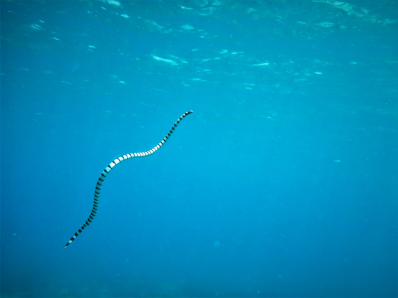Perfect verb form: sea snake
The Grammar Bit!
Read the six scintillating sentences opposite. At first glance, they all appear to be written in the past tense with ‘- ed’ ending verbs signalling that events and actions have already taken place.
On closer inspection, the first three sentences have events and actions that started in the past, but are either still happening now or are in some way connected to the present. We say that these sentences are written in the present perfect form of the past tense. Notice how the words ‘has‘ and ‘have‘ are used to give this additional layer of meaning.
The fourth, fifth and sixth sentences describe actions and events that started in the past and ended at another point in the past. You’ll notice how the word ‘had‘ has been used to give this additional layer of meaning. We say that these sentences are written in the past perfect form of the past tense.
With your talk partner, see if you can think of one further sentence for each form. (Your sentences don’t have to relate to the sea snakes.)
Scintillating Sentences
Present perfect form
1) The sea snake has grown to a length of 1.4 metres.
2) Sea snakes have adapted to be able to remain under water for up to two hours.
3) The experienced diver has distanced himself from the highly venomous sea snakes.
Past perfect form
4) The sea snake had washed up on the land during the storm and was unable to move.
5) The sea snake had bitten an eel to consume.
6) The banded sea snake had been looking for prey in the nooks and crannies of the coral and was now surfacing for air.

Did you know?
Sea snakes do not possess ‘scutes.’ These are the special scales that help land-based snakes to grip and slither across the ground.

